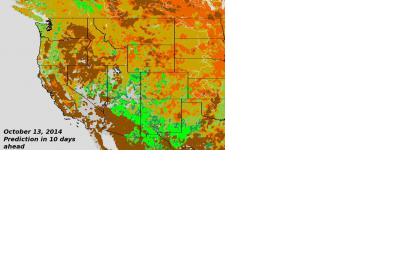United
Nations
Office for Outer Space Affairs
UN-SPIDER Knowledge Portal
Two scientists of the Center for Satellite Applications and Research (STAR), the scientific arm of the NOAA Satellite and Information Service (NESDIS), have elaborated a new method to observe and forecast short-term fall foliage coloration.
The latest STAR system was created with the support of the JPSS Proving Ground and Risk Reduction Program and it employs the VIIRS daily vegetation index to monitor foliage indicators across the United States with a time-pace of 3 days and to generate predictions of 10 days.
The STAR product represents the first instrument that can evaluate and forecast the fall foliage coloration phenomenon from a satellite data time series. The information will be useful for a wide variety of purposes, such as monitoring drought and crops germination, individuating hurricane destruction, forest pests, disease outbreaks, and species invasion.
